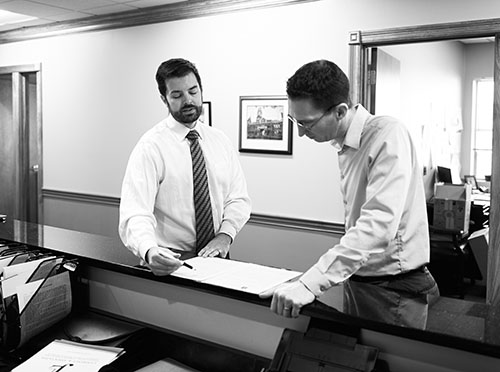How Is Fault Determined in an Accident?
Posted on Friday, April 1st, 2022 at 5:35 pm
When you’re injured in an accident in which someone else was to blame, you can take legal action against them to recover compensation for your accident-related losses. These losses can be financial or intangible, like medical bills or pain and suffering. You could be entitled to recover those losses if you can prove that someone else’s negligence caused your injuries.
A large part of your personal injury claim or lawsuit isn’t just determining who was responsible for the accident but also determining the amount of responsibility each of you and the other involved party had for the accident. In other words, what, if any, was your contribution to causing the accident? There are several reasons why fault is an important factor in a personal injury claim or case.
If you have pressing questions regarding your case, don’t hesitate to reach out to Lawrence & Associates Accident and Injury Lawyers, LLC today.

What Is Fault in an Accident?
More than one person could be to blame for an accident. It’s possible that in an accident, the fault might not solely lie with one responsible party. Fault could be attributed to any person who played a part in causing someone’s injury, including the injured party themselves.
In terms of personal injury matters, fault guides how liability is determined. Every state handles fault according to its own laws.
Types of Fault
States follow one of two types of legal doctrines pertaining to fault in personal injury cases: comparative fault or contributory negligence. These two legal doctrines are sometimes referred to as comparative/contributory fault or comparative/contributory negligence.
The contributory negligence doctrine states that if an injured party is found to share any fault in the accident that caused their injuries, they aren’t entitled to be compensated at all. Contributory fault laws are often referred to as pure contributory fault laws.
Contributory negligence is considered extremely strict when determining fault and is only followed in a handful of states when determining negligence in a personal injury matter.
The other type of fault or negligence is comparative negligence. Less strict than contributory negligence, there are two types of comparative negligence laws: pure and modified. With both pure and modified comparative negligence laws, an injured party’s compensation is reduced in proportion to the injured party’s fault in the accident.
States like Kentucky follow pure comparative negligence. Pure comparative negligence laws state that no matter what proportion of fault an injured party had in an accident, they can recover compensation for their injuries. For instance, imagine you were driving through an intersection with the green light, but you were texting when another driver hit you because he ran a red light. In this case, you’re partly to blame because you were texting and could not take evasive action. The jury might find that you were 20 percent to blame for the accident, so you could only obtain compensation for up to 80 percent of your accident-related losses. Even if the situation were reversed and you ran the red light while someone else was texting through a green light, and your portion of fault was 80 percent, you could still recover 20 percent of your losses.
Other states, like Ohio, have modified comparative negligence laws. Modified comparative negligence laws state that as long as the injured party is less at fault for the accident than the other party, they can recover compensation for their losses. However, under modified comparative negligence, if the injured party is more than 50 percent at fault for the accident, they’re not entitled to receive any compensation.
Both comparative and contributory negligence can be used to reduce or eliminate the at-fault party’s liability and the compensation that the injured party might otherwise be entitled to. Contact us today.
How Do You Figure Out Who Was at Fault?
When you hire a personal injury attorney, your attorney’s job is to help you build a strong personal injury claim or lawsuit. Your attorney will investigate the accident when building your case. During their investigation, your attorney will determine who is liable for the accident. The investigation will also reveal whether you shared any fault in the accident. This is helpful for several reasons. First, it will help your attorney arrive at a realistic, maximum amount of compensation that you might be entitled to. Second, because your attorney will know the full facts of your case, they will be able to prepare for any defense based upon fault that the at-fault party may try to use in the case.

Call Lawrence & Associates Accident and Injury Lawyers, LLC to Discuss Your Case
If someone caused you serious injuries because of their negligent actions, you have the right to take legal action against them to obtain compensation. The experienced Cincinnati personal injury attorneys of Lawrence & Associates Accident and Injury Lawyers, LLC can help you with your case. Call us today at (513) 351-5997, or contact us online to schedule a free case evaluation.










